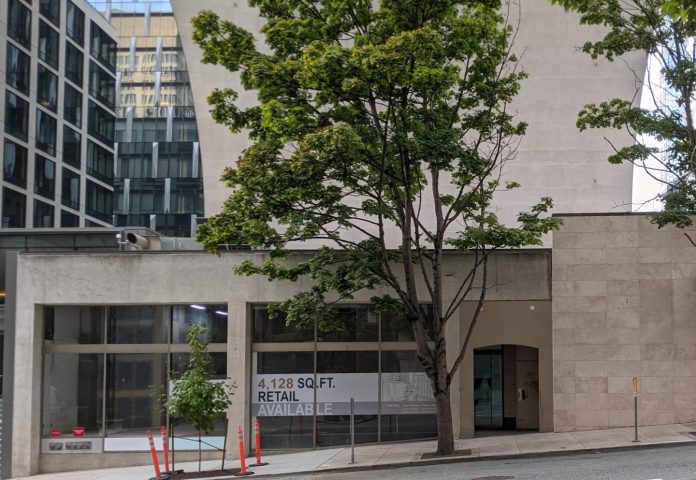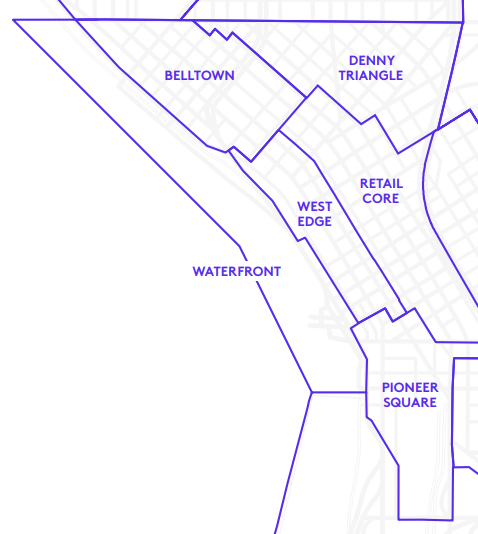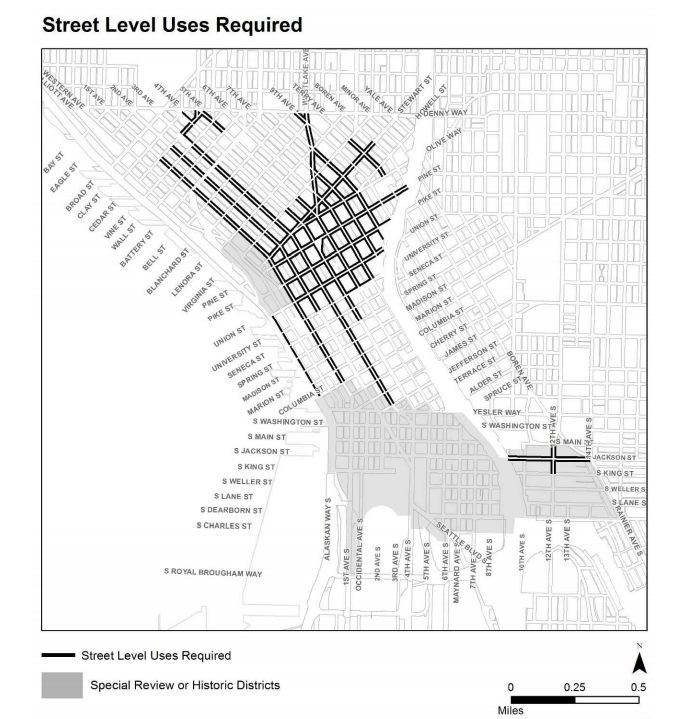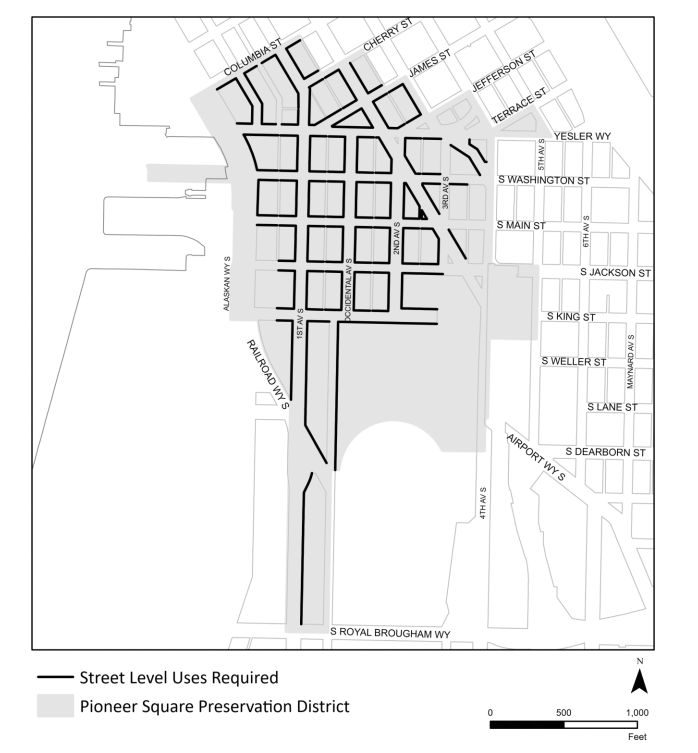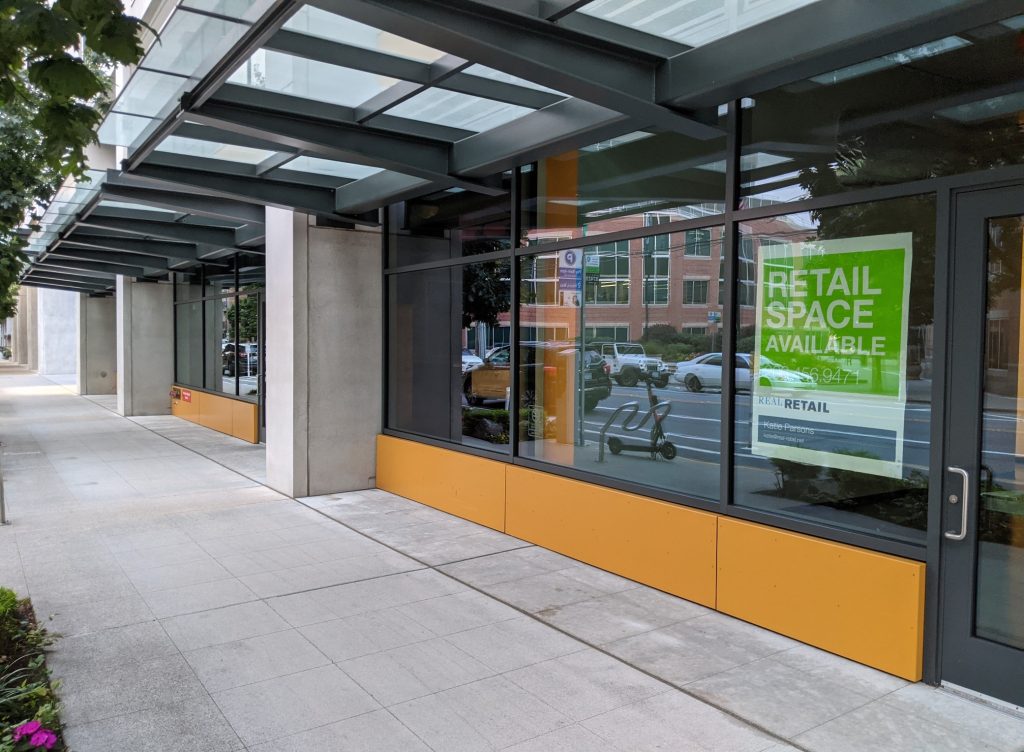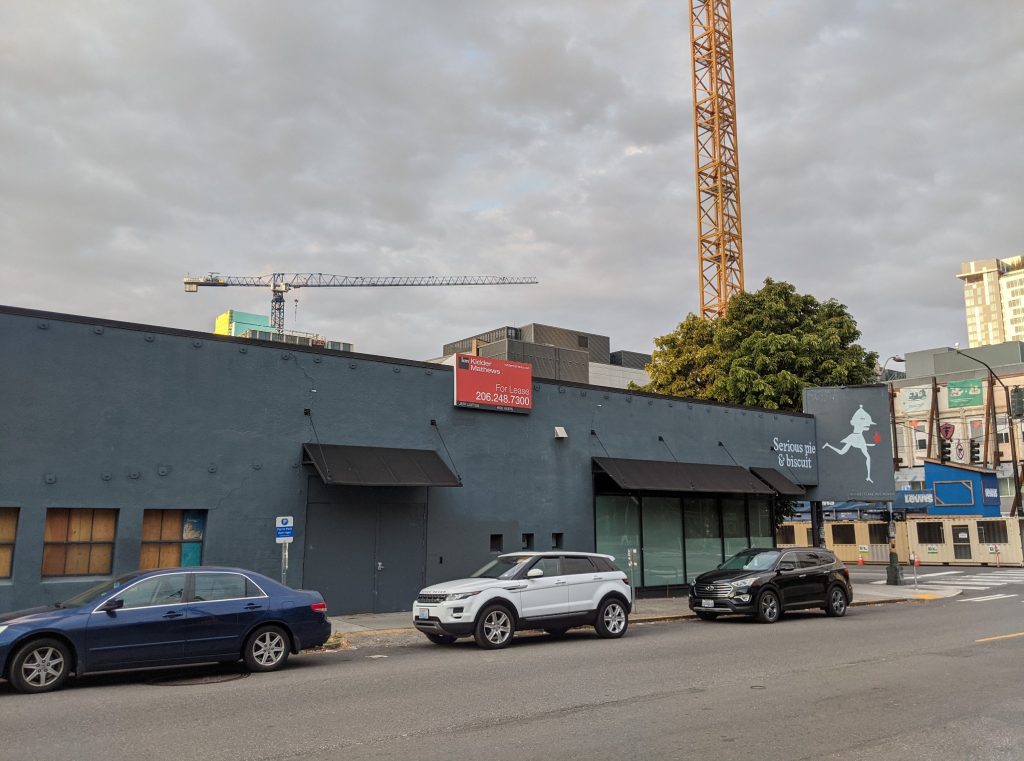On Monday, the Seattle City Council unanimously passed an ordinance to energize Downtown Seattle and South Lake Union (SLU) with new street-level uses. This effort hopes to help Downtown and South Lake Union recover from the pandemic-induced recession by filling vacancies and promoting active streets. The legislation also offers an opportunity to reshape the two neighborhoods with new services that better cater to their burgeoning residential populations.
After seeing indicators like domestic visitors, foot traffic, and hotel occupancy collapse to percentages in the tens and twenties of their 2019 figures, Downtown Seattle has begun to see significant recovery. According to the Downtown Seattle Association (DSA), domestic visitors have returned to 87% of pre-pandemic figures, foot traffic is back to 77%, Pike Place Market visitors are up to 86%, and hotel occupancy rates have returned to percentages in the 70s. On Downtown storefronts, the DSA’s 2021 economic report found that more than 160 storefronts permanently closed in 2020 and roughly 90 businesses opened new storefronts in 2020. These figures represent a Downtown retail vacancy rate record low of 1.7% in 2019 and a slight increase up to 2.5% by the end of 2020. This leaves over 70 storefronts and new street-level storefronts, at the end of 2020 to be filled by business as usual and new allowed uses — though many of these empty storefronts will likely have been filled by the time the bill is implemented.
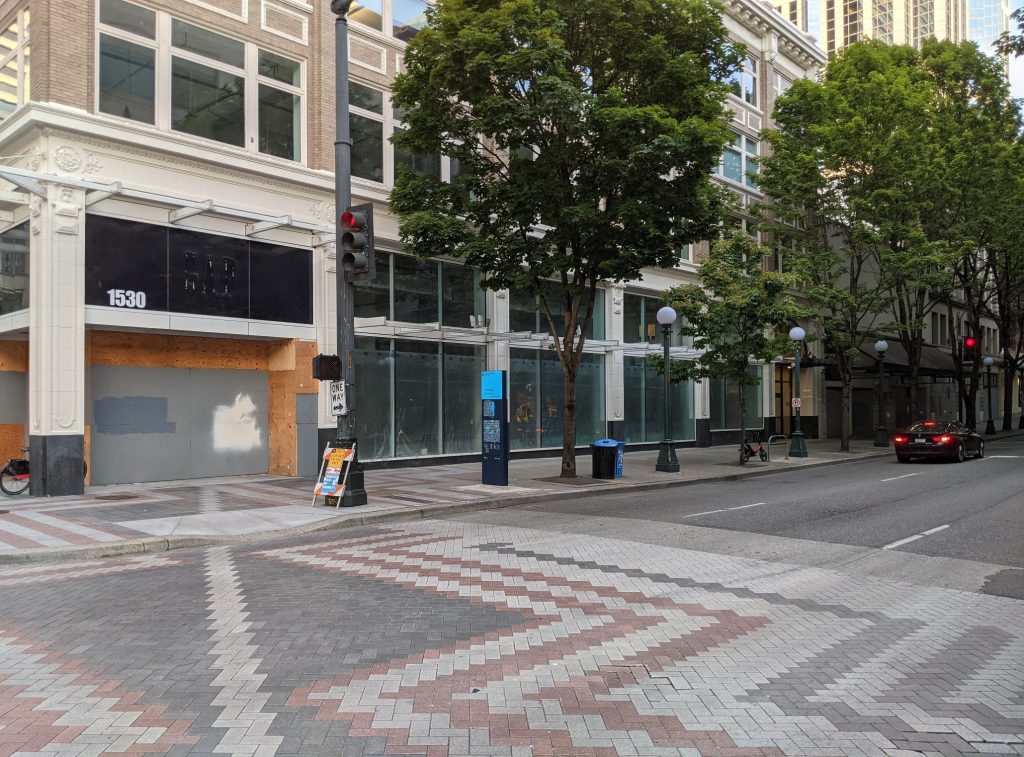
Scope of the bill
Currently where street-level uses are required in downtown/SLU, new street-level storefronts are limited to…
The new legislation expands allowed usage, where street-level uses are required, to include…
- General sales and services (grocery, pharmacies, shops, customer service offices),
- Eating and drinking establishments,
- Human service uses,
- Child care centers,
- Major durables retail sales,
- Entertainment uses,
- Museums,
- Libraries,
- Schools (minus the retail core),
- Public atriums,
- Arts facilities,
- Religious facilities,
- and bicycle parking.
- More arts facilities like art installations,
- Shower facilities for bicycle commuters,
- Food processing and craft work,
- Horticultural uses,
- Institutions,
- Lobbies, gyms, meeting rooms, shared working spaces,
- Medical services,
- Public parks,
- Public restrooms,
- Sales and services,
- Light manufacturing,
- and any similar use or activities that the Director of the Seattle Department of Construction and Inspections (SDCI) determines to have the likelihood of attracting and increasing pedestrian activity in the area.
In the SDCI Director’s report, more specifications are detailed. It is noted that art installations differ from arts facilities by being less formal, so it includes pop-ups like window displays. Museums are already allowed, but the changes clarify that they are allowed for Pioneer Square. Sales and services broaden the existing allowed range, but construction materials and industrial supplies are excluded. Institutions include community centers and private clubs. Horticulture and light manufacturing could introduce spaces like vertical farms and makerspaces/3D printing facilities. “Attracting and increasing activity” can include expanding active time beyond 8:00am to 5:00pm, and adding to the variety of goods and services.
These additional uses are allowed where street-level uses are required in any SM-SLU (South Lake Union) zone, except Valley Street Between Fairview Avenue North and Westlake Avenue North — the space between Lake Union Park and the new Google buildings — or Downtown zone minus the International Special Review District in Chinatown-International District. Applicants will be eligible to establish these uses within 12 months after the effective date of the ordinance, and would be allowed to keep these uses after that 12-month duration. However, the uses would continue as non-conforming use. This way if the use were to change in the future, then it would have to conform to the land use regulation at that time.
South Lake Union was added to the legislation with Lewis Amendment 1 in the Land Use and Neighborhoods Committee meeting. Councilmember Andres Lewis noted that while South Lake Union wasn’t pummeled by the pandemic as badly as Downtown, it was heavily impacted by the decline and slow recovery of office work. Twenty-three business closures happened in South Lake Union during the pandemic, and there’s only been partial recovery. Also in the committee meeting, Councilmember Debora Juarez made sure to clarify that Downtown and South Lake Union had restricted uses compared to other neighborhoods, leveling the playing field for the two increasingly residential neighborhoods.
Downtown and South Lake Union as residential neighborhoods
These new uses also could help meet the growing demand of residents in Downtown Seattle and South Lake Union. Two figures that haven’t changed much since the most severe times of the pandemic are office workers and occupied apartments. Even when the amount of office workers has been reduced to a quarter of pre-pandemic figures, the number of occupied apartments have stayed steady at pre-pandemic levels and even increased. This stability during the pandemic demonstrates the resiliency and realization of Downtown and South Lake Union as residential neighborhoods.
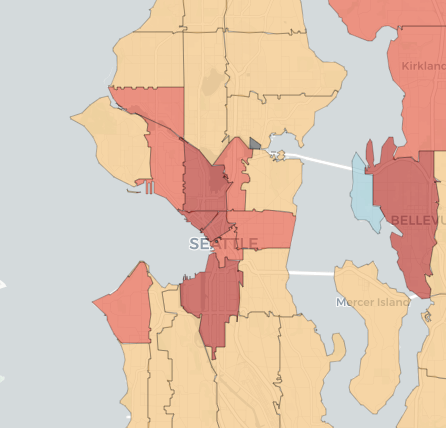
Based on 2020 Census data, the zip codes that cover Downtown and South Lake Union were among the fastest growing areas of one of the fastest growing cities in the United States. From 2010 to 2020, 98121’s (Belltown and some of Denny Triangle and Waterfront) population grew by nearly 70%, jumping 12,628 residents to 21,411. During the same period, 98101’s (Waterfront, West Edge, Retail, Denny Triangle, and some of First Hill) population grew by nearly 60%, from 10,238 to 16,237. South Lake Union’s zip code that includes Uptown and East Queen Anne grew by 66.8% or almost 14,000 residents. The zip code with Pioneer Square grew a bit slower at 23.4%. That’s roughly a population increase of 32,000 — almost 10% of the growth countywide — in Downtown, South Lake Union, and their closest neighbors, a combined area that can all fit in a few of Seattle’s other zip codes’ square footage.
The emergency land use changes will not only help fill vacant storefronts, but it will also provide much needed services by a greatly expanded residential population. Many uses that you wouldd expect in a residential neighborhood like gyms, medical services, and most sales and services could be finally coming to Downtown and South Lake Union. Hopefully, we will see the eligibility of these uses be extended or made permanent because if a pandemic was unable to uproot a dense community, then it seems unlikely that these increasingly residential neighborhoods will be shedding residents in the foreseeable future.
Seattle Mayor Jenny Durkan signed the bill permitting additional street-level uses this week, and in her announcement, she reviewed the work that has been done to return Downtown to business as usual. Covid-19 precautions, testing, vaccination, masking, financial aid, and other steps have allowed Downtown to approach normal. This bill also comes after the approval of the Seattle Rescue Plan, which allocated more than $9 million to Downtown Recovery Projects. New street-level uses that may grant Downtown and South Lake Union new goods and services, which other Seattle neighborhoods have already been allowed to have, will help breathe more life into the neighborhoods and allow them to respond better to the needs of their increasing number of permanent residents.
Shaun Kuo is a junior editor at The Urbanist and a recent graduate from the UW Tacoma Master of Arts in Community Planning. He is a urban planner at the Puget Sound Regional Council and a Seattle native that has lived in Wallingford, Northgate, and Lake Forest Park. He enjoys exploring the city by bus and foot.


